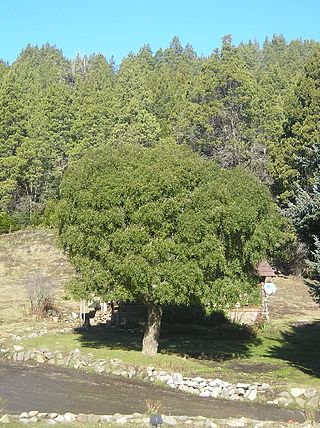
Gymnosporia is an Old World genus of plants, that comprise suffrutices, shrubs and trees. It was formerly considered congeneric with Maytenus, but more recent investigations separated it based on the presence of achyblasts and spines, alternate leaves or fascicles of leaves, an inflorescence that forms a dichasium, mostly unisexual flowers, and fruit forming a dehiscent capsule, with an aril on the seed. It is dioecious, with male and female flowers on separate plants.

Maytenus is a genus of flowering plants in the family Celastraceae. Members of the genus are distributed throughout Central and South America, Southeast Asia, Micronesia and Australasia, the Indian Ocean and Africa. They grow in a very wide variety of climates, from tropical to subpolar. The traditional circumscription of Maytenus is paraphyletic, so many species have been transferred to Denhamia, Gymnosporia, Monteverdia, and Tricerma.

Phylica is a genus of plants in the family Rhamnaceae. It contains about 150 species, the majority of which are restricted to South Africa, where they form part of the fynbos. A few species occur in other parts of southern Africa, and on islands including Madagascar, the Mascarene Islands, Île Amsterdam, Saint Helena, Tristan da Cunha, and Gough Island. The oldest fossils of the genus are of Phylica piloburmensis from the Burmese amber of Myanmar, dating to around 99 million years ago during the mid-Cretaceous.
Acrosanthes is a genus of flowering plants in the family Aizoaceae. It is native to Southern Africa.



